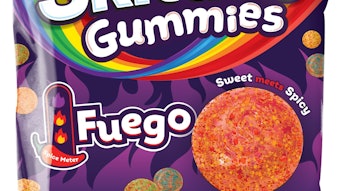
It has been 30 years since the debut of Givaudan's proprietary taste language SenseIt. First developed in 1993, Givaudan claims that SenseIt has become a universal and standardized language used around the world for food experience characterization, differentiation, and product innovation.
Over the last three decades, Givaudan has been regularly adding new descriptors to the language evolving what was designed as a local tool for flavor characterization to a robust universal language with descriptors for flavor, taste and mouthfeel. One example of SenseIt's evolution is the introduction of a mouthfeel language for solid applications was recently rolled out, enabling manufacturers to better understand how to modulate dry, astringent and juiciness characteristics in plant-based products.
The SenseIt language is said to allow usage in virtual environments, when alternatives to in-person consumer testing are needed. Internally, Givaudan's trained panels were able to use SenseIt along with their proprietary holistic profiling method to provide customers with highly accurate information on consumer perception without going to consumers.
The next steps for the SenseIt platform will be digitization to simplify the language’s increasing complexity and designed to create a seamless experience for users while supporting and enabling our next generation of language-based artificial intelligence (AI) applications. SenseIt hosts 400+ descriptors and digitization plans, the sensory language is designed to build an ever-clearer window into the consumer mind.
Fabio Campanile, global head of Science & Technology Taste & Wellbeing explained, “Consumers know if they like or do not like a product, but have difficulty explaining why. Sense It helps bridge the gap between what consumers perceive and what they are able to express. Over the years the language has been expanded into new, important categories and so it continues to be very valuable in helping guide our customers with their product creation.”
Campanile added, “We’re creating a new set of digital tools that will help the user put their sensory perception of a product, such as a plant-based burger, into descriptive words that convey the full experience, including mouthfeel, colour and taste.”










